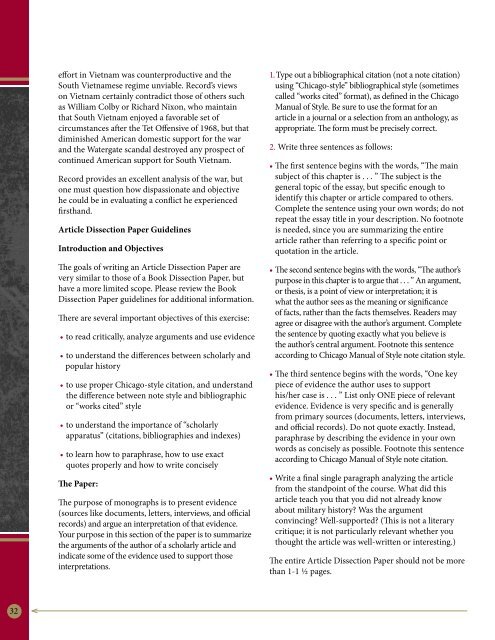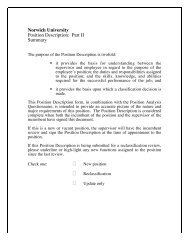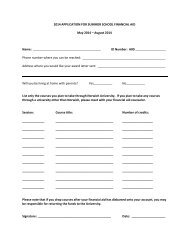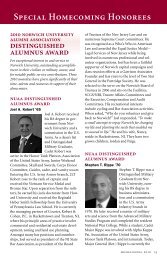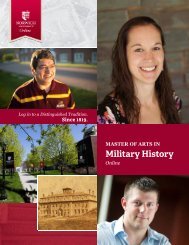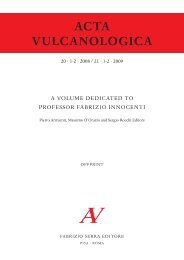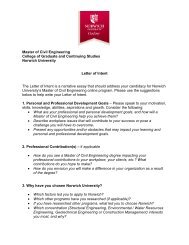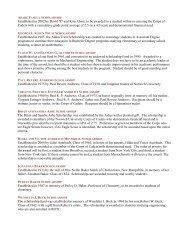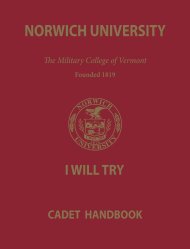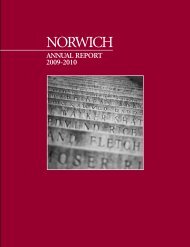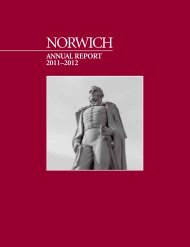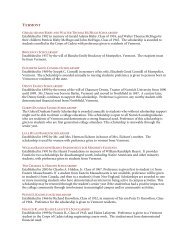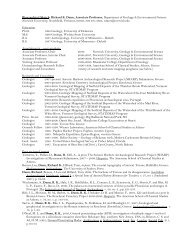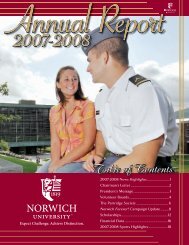Surviving Master's-Level History Programs at Norwich University: A ...
Surviving Master's-Level History Programs at Norwich University: A ...
Surviving Master's-Level History Programs at Norwich University: A ...
- No tags were found...
Create successful ePaper yourself
Turn your PDF publications into a flip-book with our unique Google optimized e-Paper software.
effort in Vietnam was counterproductive and theSouth Vietnamese regime unviable. Record’s viewson Vietnam certainly contradict those of others suchas William Colby or Richard Nixon, who maintainth<strong>at</strong> South Vietnam enjoyed a favorable set ofcircumstances after the Tet Offensive of 1968, but th<strong>at</strong>diminished American domestic support for the warand the W<strong>at</strong>erg<strong>at</strong>e scandal destroyed any prospect ofcontinued American support for South Vietnam.Record provides an excellent analysis of the war, butone must question how dispassion<strong>at</strong>e and objectivehe could be in evalu<strong>at</strong>ing a conflict he experiencedfirsthand.Article Dissection Paper GuidelinesIntroduction and ObjectivesThe goals of writing an Article Dissection Paper arevery similar to those of a Book Dissection Paper, buthave a more limited scope. Please review the BookDissection Paper guidelines for additional inform<strong>at</strong>ion.There are several important objectives of this exercise:• to read critically, analyze arguments and use evidence• to understand the differences between scholarly andpopular history• to use proper Chicago-style cit<strong>at</strong>ion, and understandthe difference between note style and bibliographicor “works cited” style• to understand the importance of “scholarlyappar<strong>at</strong>us” (cit<strong>at</strong>ions, bibliographies and indexes)• to learn how to paraphrase, how to use exactquotes properly and how to write conciselyThe Paper:The purpose of monographs is to present evidence(sources like documents, letters, interviews, and officialrecords) and argue an interpret<strong>at</strong>ion of th<strong>at</strong> evidence.Your purpose in this section of the paper is to summarizethe arguments of the author of a scholarly article andindic<strong>at</strong>e some of the evidence used to support thoseinterpret<strong>at</strong>ions.1. Type out a bibliographical cit<strong>at</strong>ion (not a note cit<strong>at</strong>ion)using “Chicago-style” bibliographical style (sometimescalled “works cited” form<strong>at</strong>), as defined in the ChicagoManual of Style. Be sure to use the form<strong>at</strong> for anarticle in a journal or a selection from an anthology, asappropri<strong>at</strong>e. The form must be precisely correct.2. Write three sentences as follows:• The first sentence begins with the words, “The mainsubject of this chapter is . . . ” The subject is thegeneral topic of the essay, but specific enough toidentify this chapter or article compared to others.Complete the sentence using your own words; do notrepe<strong>at</strong> the essay title in your description. No footnoteis needed, since you are summarizing the entirearticle r<strong>at</strong>her than referring to a specific point orquot<strong>at</strong>ion in the article.• The second sentence begins with the words, “The author’spurpose in this chapter is to argue th<strong>at</strong> . . . ” An argument,or thesis, is a point of view or interpret<strong>at</strong>ion; it iswh<strong>at</strong> the author sees as the meaning or significanceof facts, r<strong>at</strong>her than the facts themselves. Readers mayagree or disagree with the author’s argument. Completethe sentence by quoting exactly wh<strong>at</strong> you believe isthe author’s central argument. Footnote this sentenceaccording to Chicago Manual of Style note cit<strong>at</strong>ion style.• The third sentence begins with the words, “One keypiece of evidence the author uses to supporthis/her case is . . . ” List only ONE piece of relevantevidence. Evidence is very specific and is generallyfrom primary sources (documents, letters, interviews,and official records). Do not quote exactly. Instead,paraphrase by describing the evidence in your ownwords as concisely as possible. Footnote this sentenceaccording to Chicago Manual of Style note cit<strong>at</strong>ion.• Write a final single paragraph analyzing the articlefrom the standpoint of the course. Wh<strong>at</strong> did thisarticle teach you th<strong>at</strong> you did not already knowabout military history? Was the argumentconvincing? Well-supported? (This is not a literarycritique; it is not particularly relevant whether youthought the article was well-written or interesting.)The entire Article Dissection Paper should not be morethan 1-1 ½ pages.32


